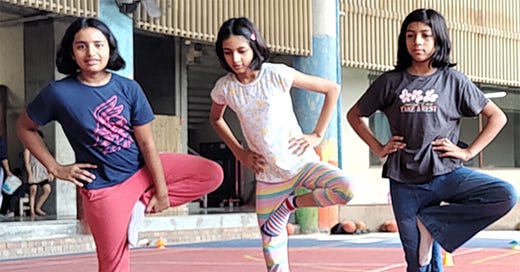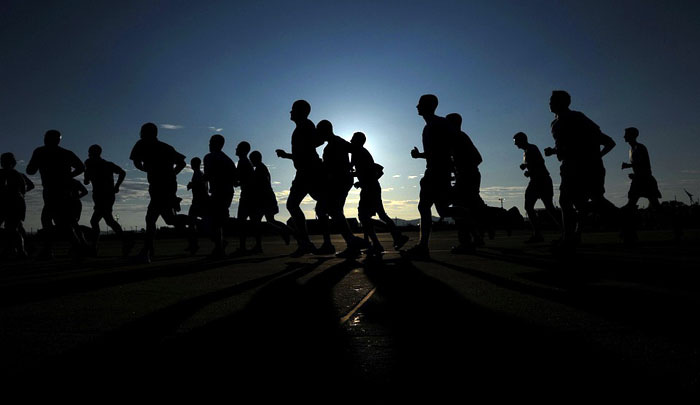We have been measuring performance of our learners to build insights about their fitness.
To read more about our approach to sports tap/click the link here.
In our pursuit of building research driven aptitude to our physical education program at Prakriti, last year we introduced fitness assessments through standardized assessment tools.
We decided to start assessing on the 7 fundamental parameters which are briefly described as below along with the tests used for assessment:
1. Balance: The ability to maintain steady body position while stationary or moving
Test Used: Stork Balance Stand Test
This simple yet effective test assesses an individual's ability to maintain static balance on one leg at a time. Good balance is crucial for various aspects of athletic performance, including maintaining proper form during exercises, improving coordination, and preventing falls or injuries. By isolating balance on one leg, the Stork Balance Stand Test highlights potential weaknesses that can be addressed through targeted training.
2. Lower Body Power: The explosive strength generated by your legs for activities like jumping and sprinting
Test Used: Standing Long Jump Test
This test provides a direct measure of the explosive power generated by your leg muscles, a crucial component for activities like jumping and sprinting.
3. Core Strength: The stability and strength of your abdominal and lower back muscles, supporting posture and movement.
Test Used: Fitness Curl Up Test
The curl-up not only assesses abdominal strength but also highlights the stability and coordination of your entire core, which is essential for maintaining good posture, transferring power throughout your body during movements, and protecting your spine from injuries.
4. Explosive Speed: The ability to move quickly over a short distance.
Test Used: 20 Meter Dash
The 20-meter dash specifically measures an athlete's maximal speed over a short distance, providing a snapshot of their ability to accelerate quickly, a key factor in many sports.
5. Endurance: The capacity to sustain physical activity over an extended period
Test Used: Cooper 12 Minute Run Test
This test gauges an athlete's aerobic endurance, which is the ability to sustain physical activity over an extended period. A high score indicates the body's efficiency in utilizing oxygen during exercise.
6. Agility: The ability to rapidly change direction and perform complex movements with coordination
Test Used: Illinois Agility Test
This test mimics the quick changes of direction and reactive movements required in many sports. It assesses an athlete's ability to rapidly shift their body weight, maintain control while changing direction, and react to visual cues.
7. Flexibility: The range of motion in your joints, allowing for efficient and pain-free movement
Test Used: Sit and Reach Test
Good flexibility allows for a wider range of motion in your joints, which can improve efficiency of movement, reduce the risk of injuries, and enhance overall performance in various sports movements.
Here are grade-wise results conducted over 12 months for grade 3 and above ( Grade 3 started in April 2024 ).
Grade 4 Grade 5 Grade 6 Grade 7
(Pinch in & out to zoom in-out, swipe for next)
Our data-driven approach to sports transcends simply measuring performance.
It allows us to uncover hidden strengths, areas to focus in training & have a tangible understanding of the progress. It also provides a personalized roadmap for each athlete's development.
By tracking progress over time, we can tailor training programs that address individual needs and maximize potential. This data-driven strategy isn't just about winning on the field; it's about empowering athletes to reach their full potential, both physically and personally.
The data is a compass, guiding us towards fostering well-rounded athletes equipped with the skills and confidence to excel not only in sports but also in life.









Nice way to strengthen both mind and body muscles :)